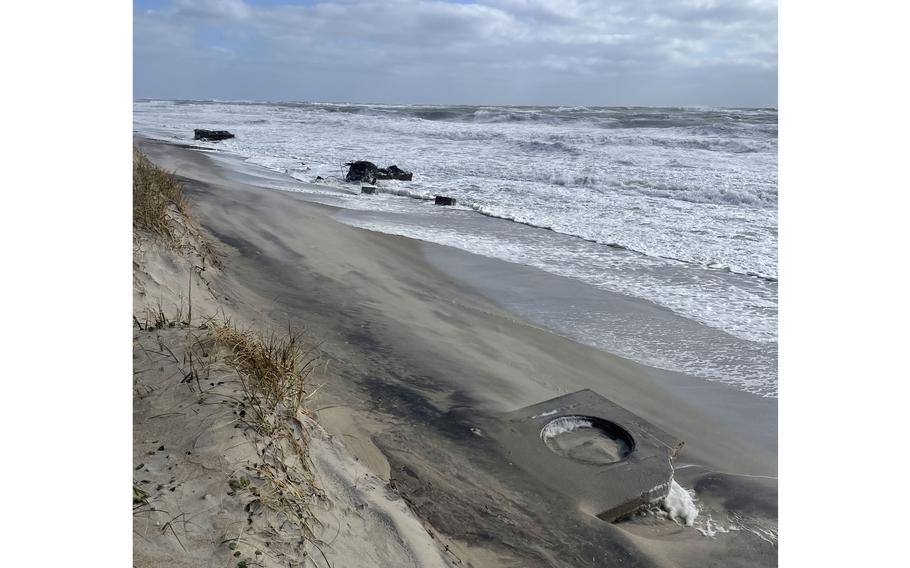
Erosion is continuing to exhume portions of a Cold War military site on North Carolina’s Outer Banks, resulting in Cape Hatteras National Seashore closing additional sections of beach. (Cape Hatteras National Seashore/Facebook)
(Tribune News Service) — Erosion is continuing to exhume portions of a Cold War military site on North Carolina’s Outer Banks, resulting in Cape Hatteras National Seashore closing additional sections of beach.
The National Park Service reports about 1,600-feet of beach is now off limits due to safety concerns.
Petroleum appears to be leaking from something buried at the once top secret base, officials say.
“The odors and sheen were observed by Seashore staff near a site formerly used by the Navy and Coast Guard,” park officials said in a March 24 news release.
“The Coast Guard and Army Corps of Engineers have been notified about the recent observations and the Seashore will be meeting with both agencies.”
Cape Hatteras began closing sections of beach south of Buxton in September, after storms “uncovered potentially hazardous infrastructure“ that had been covered by sand for years.
The latest closure announcement means the public can’t access beach from “the southernmost beachfront home in the village of Buxton and ending at the first (southernmost) jetty,” the park reported. That’s about three-tenths of a mile, officials said.
Historians note the 50-acre military site — known as Naval Facility Cape Hatteras — conducted “secret monitoring of submarines,” according to CoastalReview.org.
It was considered an early warning system for ballistic missile attacks from sea, the outlet reports.
“In the 1960s, the Sound Surveillance System (SOSUS) played a crucial role in the U.S. Navy’s efforts to track and monitor Soviet submarine activity during the Cold War. The system ... consisted of a network of underwater listening stations,” the National Park Service reports.
“On June 26, 1962, Navy personnel inside the ... Cape Hatteras terminal building made the first SOSUS detection of a Soviet diesel submarine.”
The site outlived its usefulness by 1982 and served as a U.S. Coast Guard location until 2012, officials say.
Concerns have long been raised over potential hazards hidden below the surface at the site, including groundwater contamination, CoastalReview.org noted.
An agreement between the National Park Service and U.S. Coast Guard called for all 16 structures to be removed when no longer needed, according to NPS. Among the areas of concern were a sewage treatment plant and two diesel generators.
©2024 The Charlotte Observer.
Visit charlotteobserver.com.
Distributed by Tribune Content Agency, LLC.